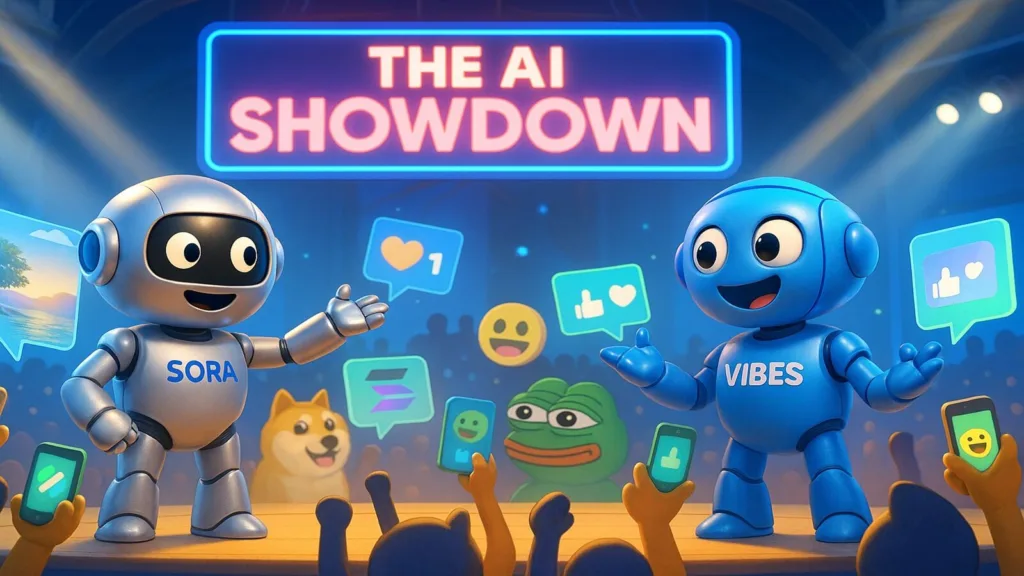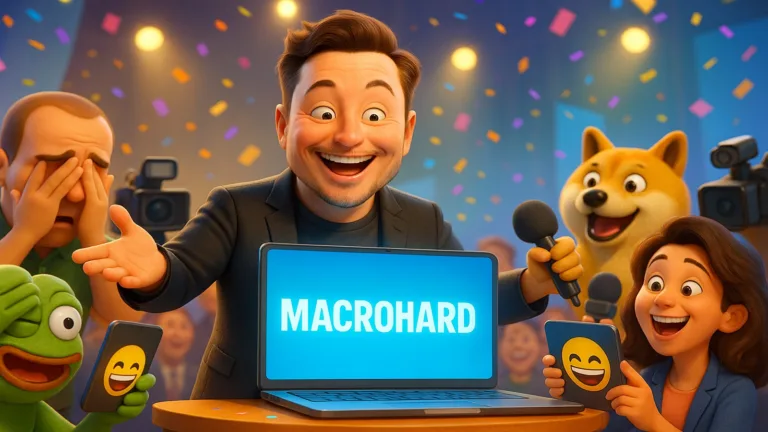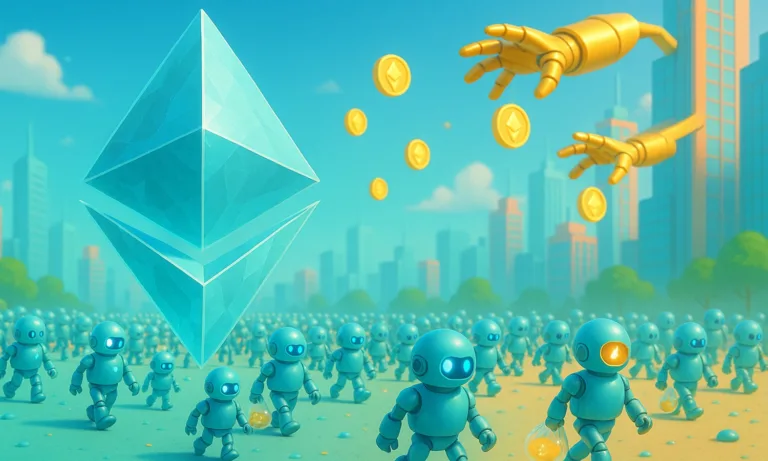From video-generating AIs feuding like rival pop stars to Elon Musk’s latest branding curveball, this week’s crypto, tech, and AI landscape blurred the line between innovation and comedy. It was a spectacle of market drama, meme economics, and machine-generated chaos; in other words, another perfectly normal week in 2025.
Satire, spoofs, and viral AI antics
Sora vs vibes: The AI video feed wars begin
OpenAI’s Sora exploded onto the social scene with its newly unleashed creative engine, while Meta’s Vibes tried to keep pace with its own algorithmic playground. The result was an AI arms race for your attention. Sora’s clips looked cinematic and unfiltered, while Vibes leaned toward curated safety. The internet quickly dubbed it the “AI TikTok War,” where your clone stars in the ads, and your privacy is the price of admission.
Elon Musk unveils Macrohard
Elon Musk introduced his new AI software brand, Macrohard, and the internet instantly turned it into a meme. Indian Twitter users joked that the name sounded like a Hindi insult, while others speculated it was Musk’s latest marketing masterstroke. Whatever the intention, the move kept him center stage in the AI conversation, right where he likes to be.
Sam Altman Becomes a Ghibli Meme
A viral deepfake showed OpenAI CEO Sam Altman “stealing” Studio Ghibli artwork, rendered in painterly animation and dramatic music. Of course, it wasn’t real, but the satire resonated. In a world where generative AI blurs the line between art and algorithm, even absurdity feels plausible.
Memecoins, predictions, and the cult of speculation
Ozak AI and the smart meme craze
Ozak AI became the latest crypto darling this week, promising to merge predictive analytics with community-driven memes. At $0.01 per token, the presale narrative sounded both brilliant and familiar: “AI will make you rich.” It’s the kind of headline that keeps traders up at night and skeptics muttering, “We’ve seen this before.”
DeepSeek AI predicts the future
China’s DeepSeek AI continued its grand tradition of fortune-telling, forecasting big surges for XRP, SHIB, and DOGE before year-end. Whether those predictions are grounded in logic or wishful coding is anyone’s guess, but they prove one thing: speculation now comes with a neural network.

Tech turbulence and AI experiments
CryptoGuard and the fight against cryptojacking
A new academic paper introduced CryptoGuard, an AI-powered system designed to detect hidden crypto-mining malware. While still in the concept stage, it highlights a growing trend: security researchers scrambling to build guardrails faster than hackers can dismantle them.
Chart crimes and bubble theater
Analysts began mocking the visual absurdity of AI hype charts, arrows pointing straight up, logarithmic scales used like confetti, and market caps drawn to the moon. The joke writes itself: when hype goes parabolic, charts become performance art.
AI artists lean into the glitch
A viral indie project called Neural Viz turned AI’s flaws into features, intentionally using distortion, repetition, and surreal logic to tell stories. The creator’s motto: “If the AI can’t get hands right, make it the plot.” Art is dead; long live the bug.
Scams, risks, and market mayhem
Scams evolve; humans don’t
From fake job listings targeting crypto developers to phishing campaigns masquerading as AI recruiters, cybercrime remains one step ahead. Experts warn that synthetic identities and deepfaked references are the new norm, scams that even your antivirus can’t outsmart.
Conclusion: AI—artificial intelligence or absurd innovation?
- AI has become a full-fledged part of the entertainment industry. Sora and Vibes are fighting for your attention, not your productivity.
- Memecoins are professionalizing. Ozak AI proves that humor can bankroll an economy.
- Security is always behind schedule. CryptoGuard is a promising solution to an ongoing problem.
- Leaders are memes. Altman and Musk both demonstrate that brand management now requires a good sense of irony.
Crypto remains the theater of the absurd. Every prediction, presale, and parody feeds the same audience: those who can’t look away.













